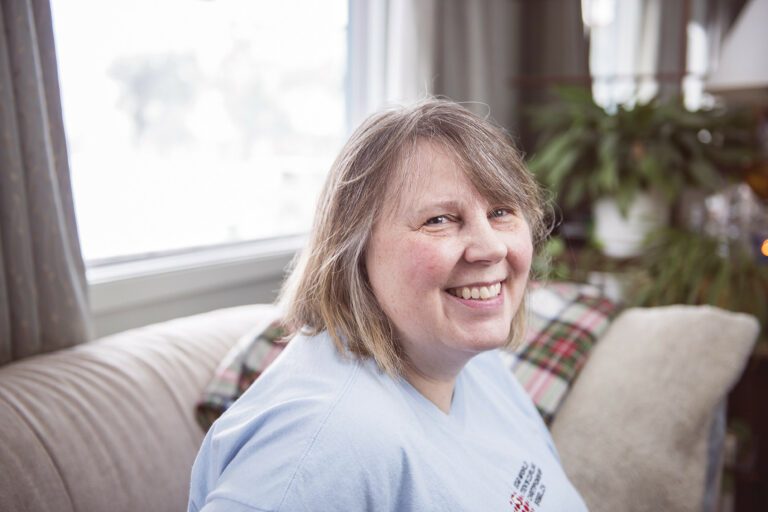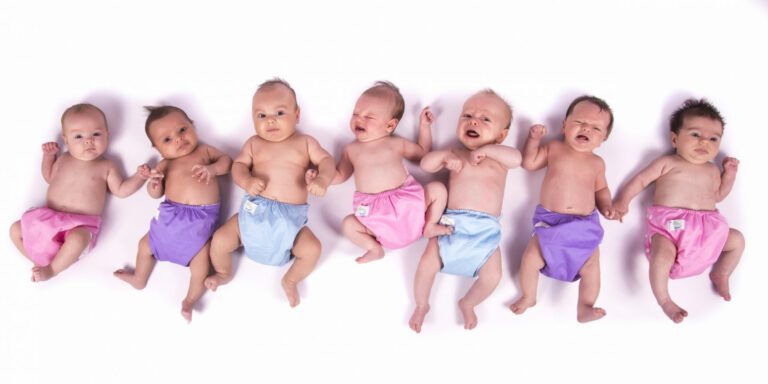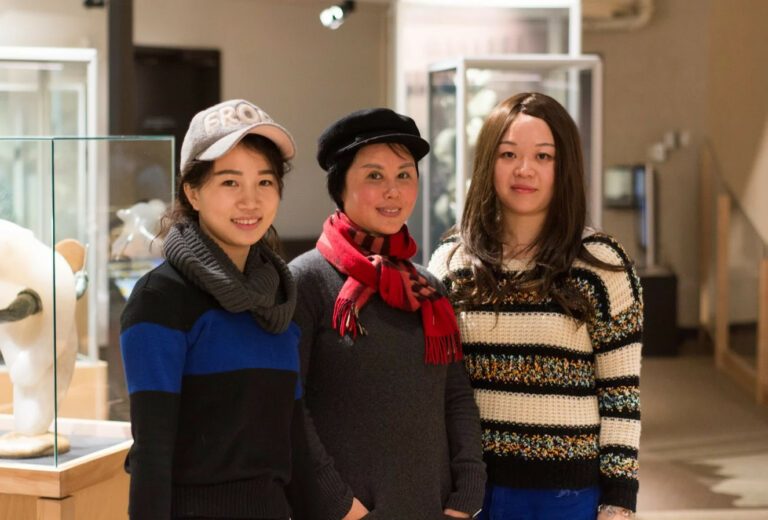It’s a bright and warm Thursday morning when I meet Mimi Frost in front of the Centre Square Mall. She’s standing on the ramp, halfway through a cigarette.
“You want to talk to me?” she asks, eyeing me up suspiciously. “About what?”
Mimi is tall and thin, wearing several hoodies and a black jacket with pink trim. Her face is gaunt, her eyes guarded under straight black bangs. I’m hoping to write a piece about women’s experiences living on the streets, I explain.
“You want to walk with us, see where we go in the streets?” She beckons to her friend Nolleen Lennie, and we’re off, ambling down Franklin Avenue.
Mimi has been in Yellowknife for nine years, she tells me. The former nurses’ assistant and project coordinator for Inuvik’s healthy babies program arrived in 2006, after an assault that saw her medevac’d from Inuvik to Edmonton with a broken neck.
“I was dead, pretty much. But the Lord didn’t want me yet, I guess.”
In the year she was recovering, she had to travel back and forth from Yellowknife to Inuvik for medical reasons; when Health and Social Services stopped covering her travel fares, she simply stayed in Yellowknife.
“It was hard at first, but now you get to know where to go, who to see. There’s nothing back home for me anymore. Not nothing. But too many memories.”
We stop at the corner store beside Sushi Café and across from Northern United Place.
“We’re going to do some gargling,” says Mimi, popping inside to buy a jumbo bottle of yellow Listerine. “Got to swish in the mornings.”
Anything that helps with the hangover, Nolleen explains as we wait outside. She’s a short woman in her early 30s with dark cropped hair and a black jacket with a loonie-sized hole burnt into the right chest panel. She grew up in Yellowknife and has been living on and off on the streets since leaving the foster care system over a decade ago.
The two women are best friends and they call each other sisters. They walk the streets together, sleep in stairwells together and protect each other.
“She’s my bodyguard, my little Bruce Lee sister,” says Mimi affectionately.
***
It’s not easy for anyone living on Yellowknife’s streets. But for women, the issue of personal safety is much more pressing. As we stop in the parking lot beside Lynn’s Place for a cigarette, Mimi and Nolleen tell me they’ve both been assaulted on the streets, and have been robbed more times than they can count. Just a few days ago, they had to “do the road rush,” says Mimi.
“We were walking to the stairwell and somebody was following us in an alley and I told her to run, somebody is behind us… She started, I never seen her run so fast. It was scary and dark out.”
Like many of the men and women I’ve talked to over the last several weeks, Nolleen and Mimi frequently sleep in stairwells around town in the winter. There is the women’s emergency shelter at the Centre for Northern Families, which can sleep up to 30 women when the extra mats are rolled out. But while the centre’s staff say they don’t turn anyone away, Nolleen says she’s had difficulty getting in before.
“Depends on how many women are there. Sometimes you have to sleep on the couch or in the kitchen – sleep sitting up.”
Stairwells are the next best option, says Mimi. “But you got keep a weapon or something with you, and somebody comes beside you you got to punch them in the forehead.”
We’re walking past St. Patrick Catholic Church on 52nd Ave. now, and Mimi and Nolleen decide to check the bins beside the church for clothes. The church has a flea market, and garments that don’t get taken are often left in the bins. No success this time. Though Mimi takes the opportunity to relay, with great bouts of laughter, how she tosses Nolleen – her “little munchkin” – up and into the bins to search for clothes or bottles.
Along with panhandling, collecting bottles and trekking them out to the bottle depot by the airport is one of the few ways they make money. Neither qualifies for income assistance, they tell me; it’s something I’ve heard from several people who use the shelters.
“Income support will not help you find a place to stay or give you any money,” Suzie Komak had told me when we’d met in the Centre for Northern Families the day before. “If you’re going place to place, they might help you, but if you live in a shelter they say you’re already provided for.”
Both Mimi and Nolleen have tried getting jobs, but they run into trouble when they’re recognized as members of the street community.
“It makes us feel ashamed. You walk downtown and you’re trying to be sober, and they look at you and think ‘Oh, they’re just winos.’ It’s embarrassing. We talk to anybody downtown, it doesn’t matter, everyone’s a human being.”
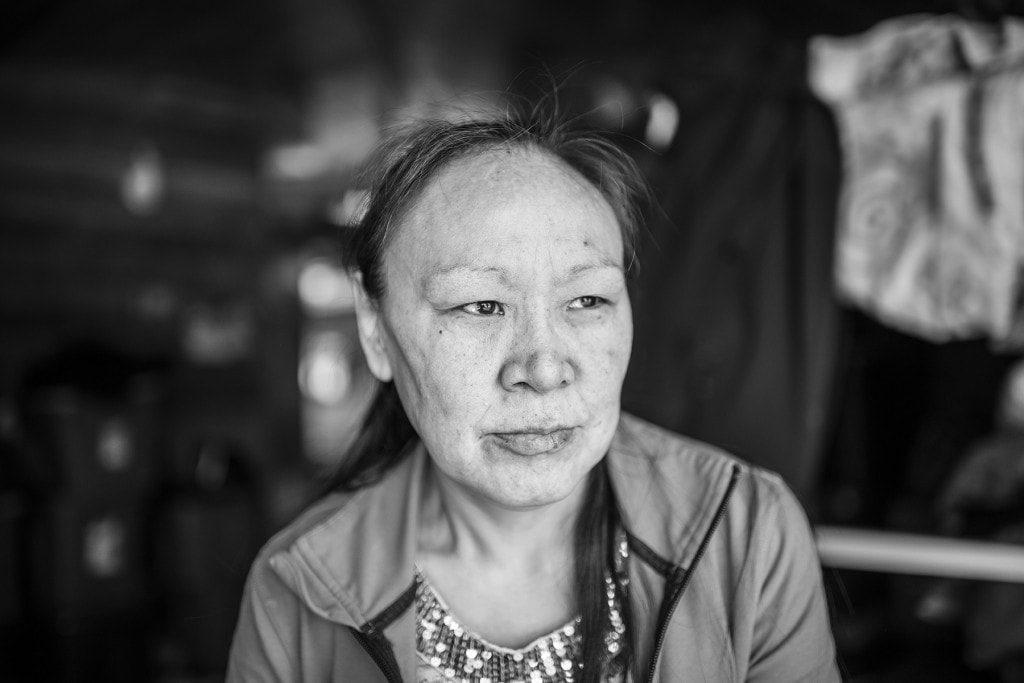
Suzie Komak: recently evicted from Lynn’s Place, she now makes her home in the women’s shelter
***
The day before meeting Mimi and Nolleen, I’d visited Lynn Brooks, Yellowknife’s long-time advocate for women’s rights — it’s her name gracing the new transitional home for women — to talk about the dynamics of living on the street as a woman. As we chatted in her toy-strewn living room, a gaggle of her foster children skipped in and out, wearing pajamas and smiling shyly.
“There’s a huge variety and a lot of misconceptions that these people must have been heavily into drugs or alcohol before, or that they have low education, or that they’re not wanted by their families,” Lynn tells me. “All these sorts of myths.”
The women — like the men — who end up on Yellowknife’s streets have unique backstories that aren’t reducible to platitudes, she says. Perhaps they have a disability and came seeking help; perhaps they came to go to school and it didn’t work out “because they didn’t have the basis to be able to succeed;” perhaps they came fleeing abusive relationships. “It’s just this big ball of stuff that they just can’t overcome.”
There are some common elements, however, for women who end up on the streets, says Lynn. While some come to Yellowknife to escape domestic violence, almost all have experienced physical or sexual violence at one point or another.
“I don’t think I’ve ever talked to someone who’s been homeless, or is homeless, that doesn’t have that component… Having experienced [violence] throughout their childhood and then as an adult, it’s just been a continual thing for them.”
And there are other elements which feature in the female experience of the streets that don’t necessarily affect men, Lynn says.
“There’s issues around hygiene, because women have particular needs, and that’s devastating for these women… [And] just looking after their appearance; the women, they’re embarrassed. I see them at the washroom in the library… they’re trying to fix themselves up. And that seems to be more of an issue for them than for the men.“
Then there’s the issue of children. Many of the women in the street community have kids who have been taken by social services or are living in the communities, being raised by other family members.
Sometimes they “don’t even know where their kids are or may even know that their children are not in a good place, so that’s a constant heartbreak for them. As the kids get older, there’s rejection from their children, and that seems to play much harder for the women than the men… When they find out two years after the fact that they have a grandchild, things like that are so so difficult for them.”
***
“Family matters, things that I lost, I don’t want to talk about it,” says Mimi. She tells me she has three kids, ages 21, 17 and 14. She took care of them when she was living and working in Inuvik, but since things went off the rails in 2006 following the assault, they’ve been living with their grandparents.
“They raised them good, raised traditionally,” she says proudly but with a hint of sadness. She hasn’t seen them since she returned to Inuvik for her father’s funeral.
“Just a rough life. What I choose today is what I’m living. But I can go on, I know that good things will happen, that’s why I say prayers everyday.”
We’re sitting in Subway eating bowls of soup. It’s the first food Mimi and Nolleen have eaten in days. There’s food at the drop-in centre, the women’s shelter and the Salvation Army, but it’s hard to keep food down when you’re drinking, Mimi explains.
Both women have tried to quit many times. Mimi has been to the alcohol treatment centre in Hay River nine times. Nolleen has been in and out of alcohol treatment since she was a kid being bounced between foster homes in Yellowknife.
“I didn’t want to listen to nobody, so I kept running away and getting sent somewhere else and getting locked up again. I never had teenage years, because they were spent in and out of facilities.”
It’s tough trying to quit when all your friends are drinking, she says. Then add to that the difficulty of getting into one of Yellowknife’s transitional homes. Nolleen was on the waitlist for a place in a transitional home for three years, but when Lynn’s Place opened last fall, she wasn’t one of the lucky few that got into the 18-suite building.
***
Even with Lynn’s Place opening up last October, Yellowknife is sorely lacking enough transitional housing to help people like Nolleen and Mimi get off the streets. You could easily fill the building three times over, Lynn tells me. And yet, the need for secure places where women can get their lives back on track and develop the skills required to maintain tenancy in the private market is obvious, says Lynn.
“If you went through residential school and then you went from one violent relationship to the next to being on the street, you’ve never learned to manage for yourself, you’ve never learned to take care of just the everyday stuff, and that’s where they really get in trouble; paying the bills, and that everyday stuff you have to take care of. If you’ve never learned that and no one’s ever helped you with that, it’s a recipe for the downfall every time.”
Lynn’s Place provides a year’s housing and somewhere to learn tenancy skills and acquire a much-needed reference. But it costs money; tenants pay $900 for a single room, $1,580 for a two-bedroom and $1,750 for a three-bedroom (all of which can be supplemented with income support). Along with that, residency in Lynn’s Place comes with fairly restrictive rules, to protect the safety of the people living in the building.
It was this restrictiveness that led to Suzie Komak getting evicted from Lynn’s Place earlier this month, she told me when we met in the living room of the Centre for Northern Families. Suzie, who has been living in shelters since she turned to drinking and was unable to keep up rental payments following her husband’s death in 2009, had only spent a month in Lynn’s Place.
The eviction, which drew significant media attention, came totally out of the blue, she says; she arrived back at the building after spending ten days in hospital to discover an eviction notice. A YWCA press release told a different story: “non-payment of rent and breaching your neighbors’ quiet enjoyment of their homes” were the reasons for eviction it cited.
Whether or not Suzie’s eviction was justified, the event highlighted a major issue with transitional housing that has different women’s organizations in town sniping back and forth at each other. As it stands, the Residential Tenancies Act doesn’t cover transitional housing like Lynn’s Place and the Salvation Army’s Bailey House for men. That means there’s no appeal process for women who get evicted.
Lynn told me this was necessary because people who go into transitional housing are agreeing to a certain program – if “other clients see this person [breaking rules] for three or four months before they have to leave, what incentive is there for them to continue and to try?”
Caroline Cochrane-Johnson, CEO of the Centre for Northern Families, sees it differently. People in transitional housing “have all of the responsibilities of a tenant but none of the rights,” she says. “Transitional housing either needs to be covered under the act, or another external governing body that makes sure the services are accountable.”
The Residential Tenancies Act was recently reviewed by the legislative assembly’s standing committee on social programs; the status quo was maintained amid much debate. However, there’s at least one thing the two sides can agree on: the need for another type of transitional housing that provides subsidized housing for people like Suzie and Mimi and Nolleen without the rules and restrictions of somewhere like Lynn’s Place or Bailey House. This is the idea behind Yellowknife’s new Housing First policy, announced last fall by the City .
“I think that might work, because when you put so many rules on people it’s like you’re living in a bubble,” says Suzie.
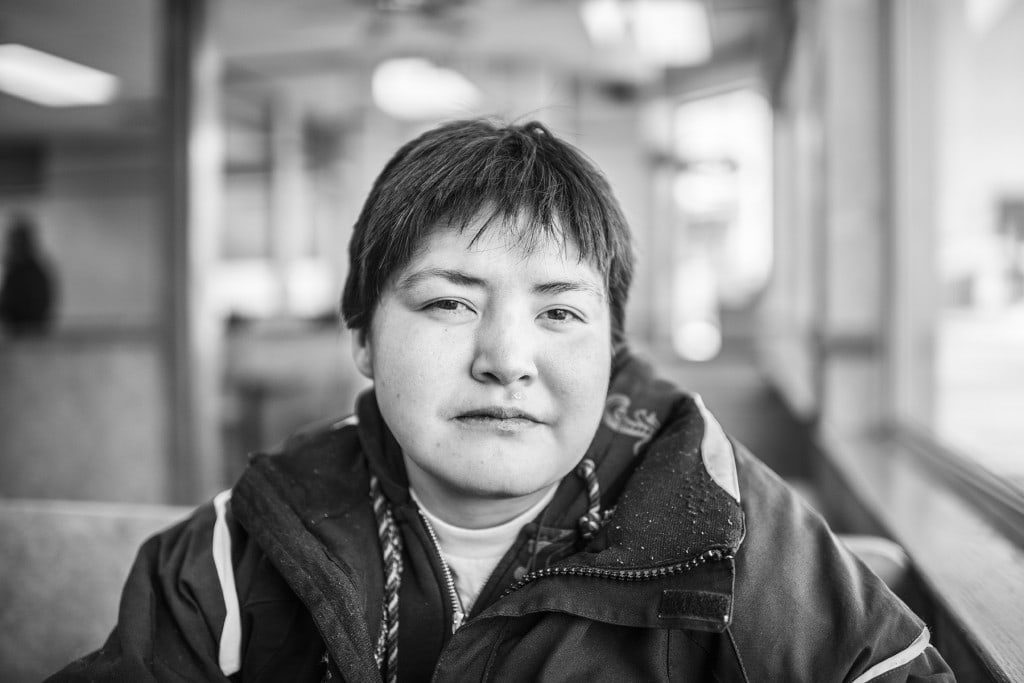
Nolleen Lennie grew up in Yellowknife foster homes but dreams of becoming a computer technician
***
Earlier on Thursday morning, before I met Mimi and Nolleen, I shared a cup of coffee in A&W with Stella Quitte and her daughter Sunshine. Fifteen years ago, Stella, who now works as a janitor in her home community of Gamètì, was living on Yellowknife’s streets. She had moved here in 2001 to experience life in the city, and ended up hanging out with friends from back home who were part of the street community.
What followed was three years of drinking and sleeping in shelters, she says.
“I was thinking, if I’m back home I’m not going to be doing this, walking the street, sleeping wherever. I was thinking, ‘Why am I doing this? I can’t do this all the time.’ So finally I went back home and since then it’s different.”
Stella says she still sees her old friends living on the streets in Yellowknife when she comes to visit. “Sometimes I tell them, ‘You don’t need to be here. You’re back home, you’re doing OK there, in your hometown you sleep good, you eat good.’”
Stella’s choice to leave Yellowknife was key to her getting clean, getting a job and being able to raise her daughter. But expecting that kind of success for everyone returning to their communities is unrealistic – as Lynn points out, there’s homelessness in the communities as well. What’s needed, says Lynn, is more and better-trained social workers.
“You should have dedicated social workers to certain parts of the population: homeless people, persons with disabilities… Workers that would learn everything they could about that community and be able to refer people very effectively and be out in the community, so people could learn to trust them.”
For the Centre of Northern Families’ Caroline Cochrane-Johnson, the key is “huge investments in addiction services and housing for people with mental health issues.”
There’s no doubt the big policy questions will keep bureaucrats, social workers and NGOs busy for years to come. But on the street, it’s the personal goals that give women like Nolleen hope of one day getting off the streets.
Throughout the morning, Nolleen has been texting on her phone, driving Mimi nuts with mock-exasperation every time it buzzes with an incoming text.
It’s the closest thing Nolleen has to a computer, and computers are what interest her most. Last year, she built a computer when she was an intern at Computers for School, a tech-recycling program in town. Her dream, ever since she took a class on it ten years ago, has been to become a computer technician.
“I built my own computer. I know how to do it,” she says.
“She’s another Einstein,” says Mimi.
Part One: Frozen Out: Homeless at Sub-Zero
Part Two: Frozen Foods: Hungry at Sub-Zero


